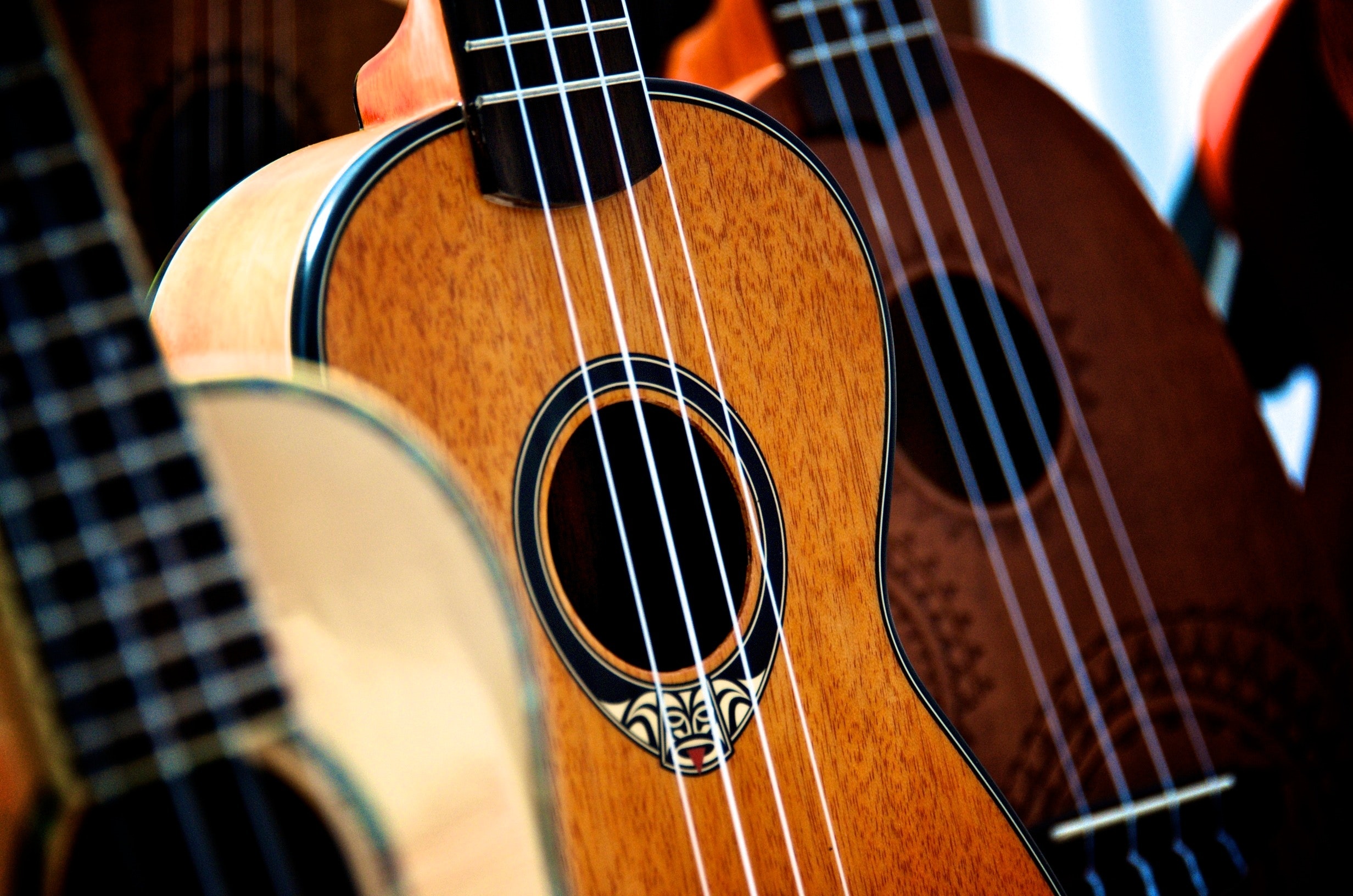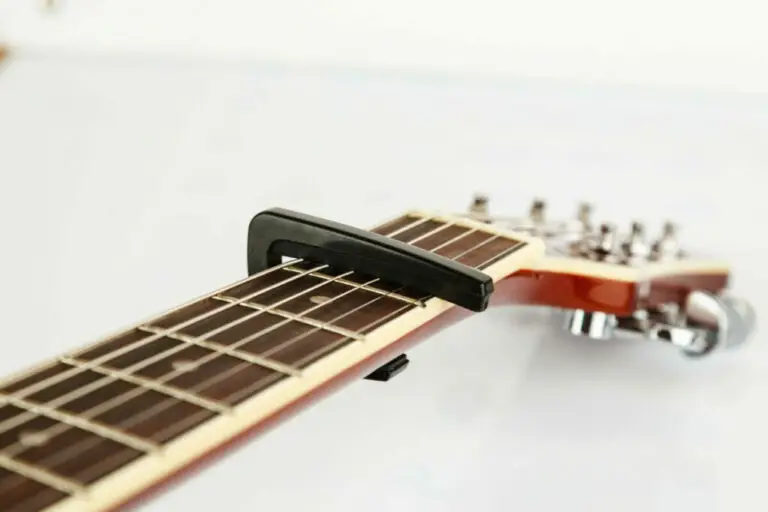Ukulele String Names, Notes, and Numbers
So you want to learn to play the uke. Perhaps you’ve already fiddled around a bit but want to learn the basics of the instrument. Either way, starting off by learning the notes is a smart strategy.
What are the different ukulele string names, notes, and numbers? A ukulele has four strings tuned to G, C, E, and A. The open C string produces the lowest note, whereas the 12th fret on the A string is the highest. However, there are several ukulele variants with different characteristics.
Whether you’ve played other stringed instruments or the ukulele is your first, you should know a few things. Read on to learn the basics of music theory: uke edition.
How Many Notes Does a Ukulele Have?
Like any other instrument, a ukulele has 12 distinct notes. However, these notes exist as various octaves (or tones) across a ukulele’s fretboard.
A more significant question to answer is how many octaves a ukulele covers. The answer to that is: a little more than two. There are duplicate notes (same pitch and octave) on multiple fretboard positions, so bear that in mind.
Also, some ukuleles have more notes than others. Fours strings are standard, but the number of frets can vary between instruments.
How Many Frets Does a Ukulele Have?
Most ukuleles have 12 frets. This means that each string is equivalent to one octave. It also means that it’s easier to determine each note. For example, the open C string and the 12th fret on the C string are the same note one octave apart. From there, it’s easy to find the notes in between.
As with anything ever, there are exceptions to the norm. The soprano ukulele is what most people think about. Soprano ukuleles can have up to 15 frets, but 12 is standard for an enthusiast-grade instrument. But a concert ukulele, for example, has between 15 and 20 frets.
Thus, about 99 percent of ukuleles have between 12 and 20 frets.
How Are Ukulele Strings Tuned?
From a guitarist’s perspective, ukulele tuning is a little wonky. How so? There are many reasons.
Firstly, pitch goes up and down when you pluck each ukulele string from top to bottom. When you’re used to each string sounding higher than the one above, this can be a surprise. For example, while the top E string on the guitar has the lowest pitch, the lowest string on a typical soprano ukulele is C (the third from the bottom).
However, the C string is only the lowest with “gCEA” tuning. Therefore, many ukulele players prefer “GCEA” tuning. The capital G means you tune the top string one octave lower. In this instance, you will get successively higher pitches as you strum downward. Understandably, the low G offers a more bass-forward sound.
If you like the idea of a bass ukulele, this is also a thing.
Like saxophones, there are many variants of ukuleles with unique pitch ranges. When you get down to baritone ukuleles, the tuning changes from “gCEA” to “DGBE.” Stepping down further to the bass ukulele, “DGBE” becomes “EADG” — just like a bass guitar.
Types of Ukuleles
Soprano ukuleles are the most common variant. They embody the high, mellow sound for which the instrument is well-known. While it’s fair to consider sopranos as “standard” ukuleles, they are part of a larger family.
Here is a breakdown of each kind of ukulele:
Soprano Ukuleles
Their popularity isn’t the only unique trait of soprano ukuleles. They are also the smallest in the uke family and therefore have the highest pitch.
Additionally, soprano ukuleles are the easiest to play. They are lightweight and easy to carry, and their shorter necks mean you don’t need to move your arms as much to reach each note.
And because most soprano ukuleles have 12 frets, one string equals one octave. The simplicity of fewer frets also makes it easier to identify notes and learn chords.
Concert Ukuleles
Concert ukuleles are a step up from soprano ukuleles in quite a few ways. They:
- Are slightly larger
- Have more frets
- Provide a deeper, rich sound
- Are more challenging to play.
Hence the name, concert ukuleles are better suited for live music. More body means more volume. Granted, a concert ukulele won’t overpower a boisterous crowd, but the extra volume helps with electric amplification.
And while they are a tad larger than sopranos, concert ukes are still delightfully compact instruments.
Tenor Ukuleles
Soprano ukuleles, tenor ukuleles — we’re starting to uncover a theme here.
Like tenor saxophones, tenor ukes are great for soloing. They allow you to develop advanced techniques and are a favorite among performance artists. In terms of size, they are an additional small step up from concert ukuleles.
A tenor is a great choice to consider if you’re serious about ukuleles. Tenors use the same notes but have longer fretboards, allowing more room to solo — something for which soprano ukuleles are not built to excel.
Overall, tenor ukes have the resonance of a guitar with standard ukulele tuning. Thus, they sound like ukuleles but feel like guitars.
Baritone Ukuleles
Baritone ukuleles resemble classical guitars but with four strings instead of six. Also, instead of g/GCEA tuning, baritone ukuleles use DGBE tuning.
In other words, baritone ukuleles use the same tuning as the bottom four strings of a guitar. Give it a wider fretboard and a couple more strings, you’ve got yourself a classical guitar.
Consequently, many people consider baritone ukes an excellent middle ground option. If you’re torn between an acoustic guitar and a ukulele, it’s almost a perfect compromise.
Embed:
Bass Ukulele
A more obscure member of the ukulele family, bass ukes are undoubtedly unique. They are surprisingly recent — a product of the 2000s, in fact. While they have exploded in popularity over the past fifteen years, they remain a niche instrument.
But if you do come across a bass ukulele in your day-to-day life, chances are it’s a Kala U-Bass. You can thank Kala for bringing the bass ukulele to regular people.
Bass ukulele strings are tuned to EADG, just like a bass guitar. Also like a bass guitar, it requires an amp to really be heard. It even looks like a bass guitar. The only chief difference is that a bass ukulele is smaller.
So, what does it sound like? Have a listen:
Embed:
It’s… it’s a bass guitar.
Common Ukulele Tunings
Different tunings mean a different arrangement of notes. How you tune each string in relation to the one next to it is what gives your ukulele its sound.
We’ve discussed typical tuning for soprano, concert, and tenor ukuleles. The standard tuning, gCEA, gives the 4th string (the top one) a higher pitch than the C below it. However, this peculiar pattern — called re-entrant tuning — can throw people off.
Thus, many ukulele players prefer GCEA tuning. The notes do not change, but the top string drops an octave lower as indicated by the capital G. GCEA provides a deeper sound than gCEA tuning. Most importantly, it provides consistency.
But these are not the only ways to tune your uke. Take a look at a few alternative styles to switch up your playing:
Hawaiian Tuning
Also called “Traditional” tuning, Hawaiian tuning embodies how the first ukulele players tuned their instruments. The notes are:
A, D, F#, and B.
In other words, the notes are all one step higher than with g/GCEA tuning. This tuning works best on soprano ukuleles and provides a brighter sound than standard tuning.
Open G Tuning
Because G major is a popular key in music, open G tuning is very convenient. For songs in G major, all you need to do is strum your ukulele without touching the fretboard to play the primary chord.
The strings are tuned just like a G chord with the following notes:
G, B, D, and G.
Thus, you leave the top string the same while tuning down one half step to B, and a whole step on each string to reach D and G.
Granted, you likely won’t use G tuning in most instances. Nevertheless, it is a useful tuning to remember that will likely come in handy at some point.
Conclusion
Learning the string names, notes, and numbers of a ukulele isn’t that hard. Most ukuleles are soprano, concert, or tenor variants. All these usually use gCEA or GCEA tuning. Identifying the notes in between is easy as scales repeat at the 12th fret.
Ultimately, the hardest part of understanding the ukulele is being aware of different variants. There are as many (if not more) kinds of ukuleles as there are saxophones. Each offers a distinct tone and feel. In some cases, as ukuleles get bigger, the standard tuning changes — again, like saxophones.
Now that you understand the basic tuning principles of a ukulele, now is the time to get playing. You will learn the most from strumming chords, practicing alongside some beloved tracks, and spending quality time with the instrument.
You’ll reach greatness sooner than you think.








